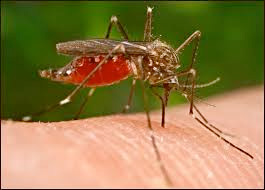ManageSafe
Least-Toxic Control of Mosquitoes Choose a different pests

|
Factsheet: Backyard Mosquito Managment, Least-toxic Control of Mosquitoes
Identification
Pest type: Insects
There are more than 2,500 different species of mosquitoes in the world, 150 of which occur in the U.S. and a only small fraction of which actually transmit disease.
Is it a problem?
Mosquitoes are linked the spread of West Nile Virus and other dieseases. However, only a small percetage of people are affected. For More information read The Truth About West Nile Virus.
Pest prevention practices
Remove potential habitat
Remove clutter
Trim back overgrown vegetation.
Wear long-sleeved, loose, light colored clothing. Mosquitoes can't bite what they can't reach!
Monitoring and record-keeping
Check ponds and sources of water for signs of mosquito larvae. Eggs can be laid either one at a time or in rafts and float on the surface of the water. Larve live in the water and come to the surface to breathe.
Non-chemical and mechanical controls
Repair holes
Create a barrier
Mesh screens
Remove water source: check drains, faucets and pipes
Remove standing water
Use least-toxic repellents: picaridin, oil of lemon eucalyptus, or other essential oils. Reapply often.
Sit near a fan when outdoors. Mosquitoes can only fly about 1 to 1.5 miles per hour - so they sure don't like flying to 10 mph wind! Use an ocillating fan for the best results.
Screen yourself in. Screened in porches or outdoor pop-ups are a good way to keep mosquitoes out while you enjoy the nice summer weather.
Burn citronella candles. While not the most effective means to repel mosquitoes, outdoor citronella candles can play a role in keeping mosquitoes out of your immediate vicinity when there's no wind.
The Mosquito Magnet. A machine much like a gas grill burns propane gas that sends out a plume of carbon dioxide. The carbon dioxide attracts mosquitoes, which are then sucked in and killed. One magnet can control adult mosquitoes over an acre of land, though different levels of success have been reported.
Biological controls
Stock closed, ornamental ponds with mosquito eating fish such as minnows or bluegills. Nuture natural mosquito predators such as bats(!), birds and dragonflies, beetles, frogs and snails. Pesticide use adversely impacts these beneficals species.
Least-toxic chemical options as a last resort
- Control mosquitoes before they hatch by using least-toxic larvacides like bacillus thuringiensis israelensis(Bti) ie. Mosquito Dunks™ , a biological larvacide that's safe for birdbaths, rain barrels, ponds, ditches, tree holes, roof gutters, unused swimming pools or wherever water collects.
- Horticultural oils (vegetable based) are effective in killing larvae in water and sinking egg rafts on the surface. However, they also can kill non-target organisms including some mosquito predators that breathe from the surface.
Chemicals to Avoid
Look at your product labels and try to avoid products containing those chemicals listed below:
(A = acute health effects, C = chronic health effects, SW = surface water contaminant, GW = ground water contaminant, W = wildlife poison, B = bee poison, LT = long-range transport)
|
Allethrin DEET Etofenprox Lindane | Malathion Methoprene Naled Permethrin | Phenothrin Piperonyl butoxide (PBO) Prallethrin Propoxur | Pyrethrins Resmethrin Spinosad |
Social Media
See what other folks are saying about this, and let us know what works for you.
Welcome back to Question of the Week!With summer in full swing, mosquitoes are once again becoming a persistent...
Posted by Beyond Pesticides on Friday, July 10, 2015
Click the post above to view and comment on Facebook, or comment directly on this site below.








